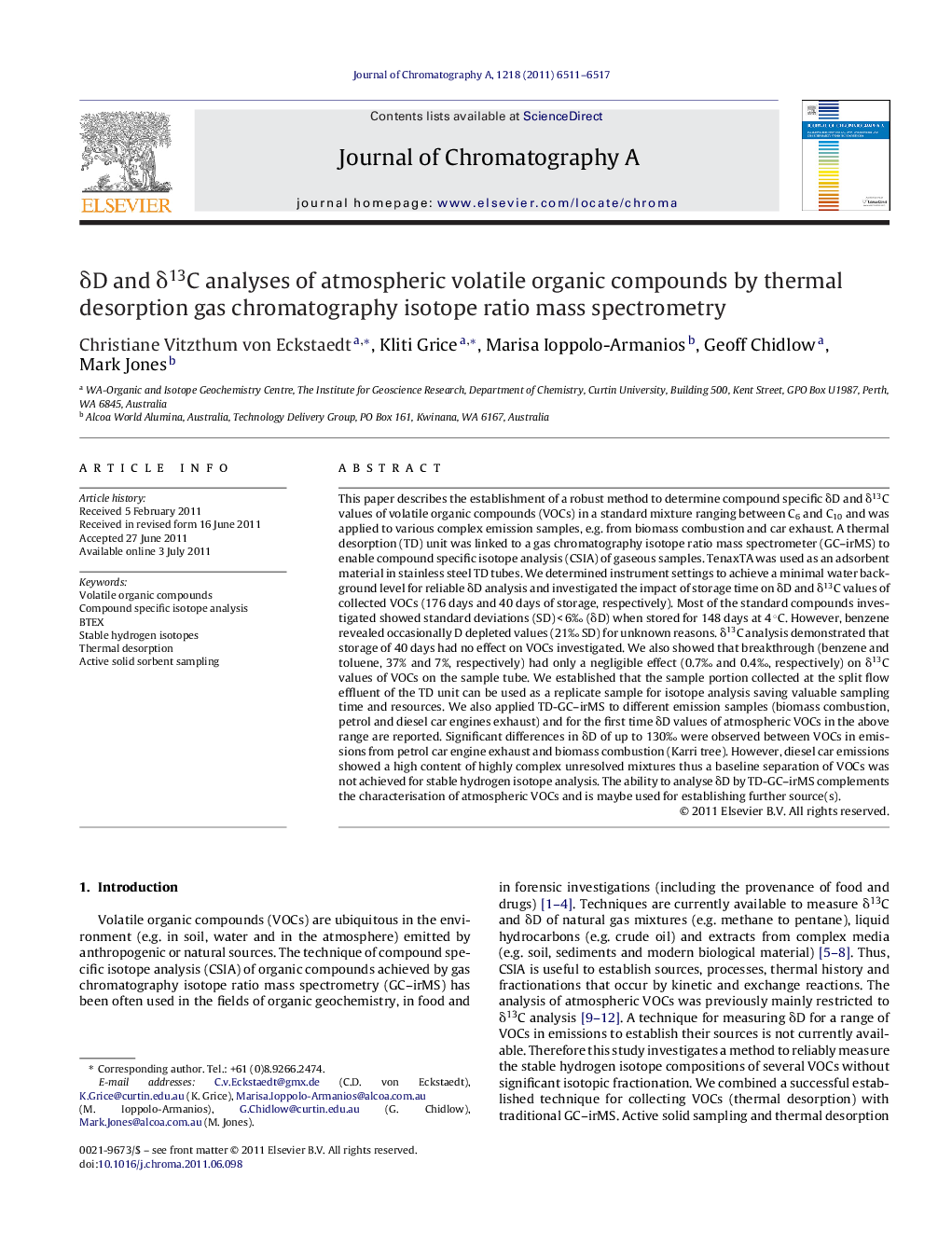| کد مقاله | کد نشریه | سال انتشار | مقاله انگلیسی | نسخه تمام متن |
|---|---|---|---|---|
| 1202495 | 965071 | 2011 | 7 صفحه PDF | دانلود رایگان |

This paper describes the establishment of a robust method to determine compound specific δD and δ13C values of volatile organic compounds (VOCs) in a standard mixture ranging between C6 and C10 and was applied to various complex emission samples, e.g. from biomass combustion and car exhaust. A thermal desorption (TD) unit was linked to a gas chromatography isotope ratio mass spectrometer (GC–irMS) to enable compound specific isotope analysis (CSIA) of gaseous samples. TenaxTA was used as an adsorbent material in stainless steel TD tubes. We determined instrument settings to achieve a minimal water background level for reliable δD analysis and investigated the impact of storage time on δD and δ13C values of collected VOCs (176 days and 40 days of storage, respectively). Most of the standard compounds investigated showed standard deviations (SD) < 6‰ (δD) when stored for 148 days at 4 °C. However, benzene revealed occasionally D depleted values (21‰ SD) for unknown reasons. δ13C analysis demonstrated that storage of 40 days had no effect on VOCs investigated. We also showed that breakthrough (benzene and toluene, 37% and 7%, respectively) had only a negligible effect (0.7‰ and 0.4‰, respectively) on δ13C values of VOCs on the sample tube. We established that the sample portion collected at the split flow effluent of the TD unit can be used as a replicate sample for isotope analysis saving valuable sampling time and resources. We also applied TD-GC–irMS to different emission samples (biomass combustion, petrol and diesel car engines exhaust) and for the first time δD values of atmospheric VOCs in the above range are reported. Significant differences in δD of up to 130‰ were observed between VOCs in emissions from petrol car engine exhaust and biomass combustion (Karri tree). However, diesel car emissions showed a high content of highly complex unresolved mixtures thus a baseline separation of VOCs was not achieved for stable hydrogen isotope analysis. The ability to analyse δD by TD-GC–irMS complements the characterisation of atmospheric VOCs and is maybe used for establishing further source(s).
Journal: Journal of Chromatography A - Volume 1218, Issue 37, 16 September 2011, Pages 6511–6517